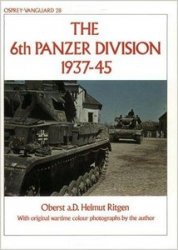Up at Elyria, Ohio, in 1967 to provide scheduled daily roundtrip passenger and cargo services east along the shore of Lake Erie to Cleveland and west to Chicago via Detroit. Beech 18 frequencies are duly inaugurated and are maintained into 1971.
BUDDAH AIR, LTD.: Jawalakhal Lalipur, GPO Box 2167, Kathmandu, Nepal, Phone 977 (1) 52 1015; Fax 977 (1) 53 7726; http:// Www. nepalonline. net/buddahair; Year Founded 1999. Buddah Air is established at Kathmandu in 1999 to offer domestic charters, with emphasis on tourist flights. Managing Director Birendra Basnet begins and continues services with 3 Beech 1900Ds.
BUDYER AIR: United States (1981-1982). Budyer Air is set up at
Evanston, Wyoming, in 1981 to provide scheduled passenger and cargo services to Salt Lake City via Rock Springs and Casper.
Unable to achieve viability in this recessionary year, the Piper light-plane operator goes out of business in early 1982.
BUFFALO AIRWAYS: United States (1982-1998). Buffalo Airways is founded at Waco, Texas, in late 1982 to operate passenger and cargo charter services, primarily to Las Vegas. Start-up authority and financing are sought in 1983, along with a suitable freighter.
Authorized to undertake international passenger and cargo flights and cargo and contract service flights, Buffalo Airways inaugurates operations from Waco in 1984 with 1 each Boeing 707-323C and B-707-351C. Contracts are flown on behalf of other operators, including HeavyLift Cargo Airlines, Ltd. of the U. K.
Enplanements for the first full year total 65,382. An operating loss of $219,000 is suffered as is a net loss of $385,000.
Although passenger boardings are down 28.2% in 1985 to 51,000, revenues are up 12.5% to $7.4 million. Expenses, on the other hand, jump 25% and cause an operating loss of $1.1 million. Still, a net gain of $25,000 is achieved.
Two additional Stratoliner freighters, 1 B-707-324C and 1 B-707-341C, are chartered in 1986 as the carrier’s contract with HeavyLift ends, but new ones are acquired from Burlington Air Express and the Spanish airline Cargosur, S. A. Flights for the former are undertaken from a new hub at Toledo and for the latter from Madrid.
Profits for the year total $484,672 (operating) and $600,235 million (net).
On April 13, 1987, Flight 721 is on final approach to Kansas City in bad weather. The B-707-351C with three crew and a passenger and under contract to Burlington Air Express descends below the 100-ft. ceiling and crashes three mi. short of the runway. All aboard are killed and the aircraft is destroyed.
Having abandoned passenger charters entirely, freight traffic accelerates by 33.3% to 3.58 million FTKs. Revenues rise 10.9% to $7.5 million and with costs held low, the operating profit swells to $953,762 and net gain reaches $1 million.
Airline employment is increased by 1.1% in 1988 to 91 and a B-707-399Cs is added to the fleet. The Stratoliners cannot stem a traffic and fiscal downturn.
Cargo plunges 35.9% to 173,268 FTKs. Revenues fall 42.3% to $4.35 million, costs drop 34.3% to $4.32 million, and the operating gain is only $27,000. Net profit declines all the way to $79,000.
The employee population increases 64.8% in 1989 to 150 and the fleet now includes the 5 Boeings and 4 BAC 1-11-204AFs. A passenger subsidiary christened Classic Air is established in the spring and begins charter services with the 4 BACs.
Freight recovers 25.8% to 57.73 million FTKs. Revenues also recover and almost double to $8.3 million. Expenses shoot up and losses are suffered: $669,448 (operating) and $608,437 (net).
The previous year’s losses cause company employment to drop in 1990 to 85 and the fleet to be cut to just the B-707-323C, B-707-341C, and B-707-399C. The Texas-based freight operator continues its passenger charters with the 4 BAC 1-11-204AFs and, on the year, enplanes
13,000 passengers. Having decided the effort is not paying off, the charter subsidiary Classic Air is closed down at year’s end.
Cargo accelerates 41.3% to 64.1 million FTKs and revenues increase to $20.94 million. Expenses climb more quickly, to $21.55 million, and force a $601,359 operating loss. Net loss deepens to $945,529.
1991 is another bad year, not only from a financial viewpoint, but now from one of traffic as well.
Passenger work is again halted and freight is down by 28.6% to 45.77 million FTKs. Revenues are off 27.1% to $15.26 million. Expenses decline by 28.1% to $15.5 million and the operating loss is cut to $236,128. Net loss is down, too, to $376,332.
Company employment is increased by 10% in 1992 to 165 and the fleet now includes 11 Stratoliners. Application is made during the spring and approved in December for the resumption of passenger charters.
Meanwhile, freight traffic skyrockets 151.3% to 115.02 million FTKs. Revenues jump 11.5% to $17.02 million, expenses rise 5.9% to $16.4 million, and a $614,196 operating profit is generated. There is also a net profit of $796,675.
In 1993, Chairman/CEO John Burwell oversees worldwide operations that employ 165 workers. The fleet now includes 8 Boeing freighters and 4 Douglas DC-8-55CFs. A major contract is signed with Azerbaijan for the provision of oil exploration support services, including the leasing of aircraft.
Charter passengers are transported for the first time since 1990 and number 50,000. The year’s cargo traffic declines 36.8% to 71.27 million FTKs and there are financial losses: $171,000 (operating) and $278,000 (net).
Buffalo withdraws from passenger services in 1994 and reforms its leased fleet to include 2 each DC-8-61Fs and DC-8-62Fs, plus 1 each B-707-323C, B-797-324C, B-707-351C, B-707-399C, and DC-8-63F. The last Canadair CL-44 Conroy is chartered for medium-haul, out-sized-cargo work.
In June, the B-797-341C, which had been withdrawn from service at the end of the previous year, is chartered to Azerbaijan Airlines (Azerbaijan Hava Yollari).
Freight slides 6.1% to 79.84 million FTKs, but revenues still increase by a significant 20.9% to $25.26 million. Expenses are only up 8.8% to $22.92 million, leaving a $2.34-million operating surplus and a net gain of $2.22 million.
The workforce stands at 165 in 1995, a 10% increase. Early in the year, the B-707-323C and B-707-399C are also leased to AHY; unhappily, the former is lost in a crash at Baku in November.
The company’s six aircraft operate 83.93 million FTKs, a decline of 26.9%.
The employee population is cut 9.1% in 1996 to 150 and the fleet is reduced by 1 Douglas. Cargo traffic is only reported through May and shows a decline of 80.3% to 6.11 million FTKs. Revenues for the entire year are $20 million.
Airline employment is increased during 1997 to 223. Having outlived its usefulness, the CL-44 Conroy is returned to its lessor in early the year. It will be repainted and also leased to Azerbaijan Airlines (Azerbaijan Hava Yollari). In late spring, company headquarters are transferred to Kansas City.
The company suspends operations early in 1998.
BUFFALO AIRWAYS, LTD.: 1000 Buffalo Dr., Hay River Airport, Hay River, Northwest Territories X0E 0R9, Canada; Phone (403) 874-3333; Fax (403) 874-3572; Code J4; Year Founded 1970. Established by Joseph McBryan at Fort Smith, Northwest Territories, in 1970, Buffalo undertakes charter and contract service flights, largely on behalf of the energy industry, throughout the province from both its main base and a branch at Fort Simpson. The initial fleet comprises 4 Douglas DC-3s, including 3 surplus craft obtained from Canadian Forces as C-47s and refurbished.
The recession of 1980 brings a temporary end to mining, oil, and gas exploration in the Western Arctic and causes McBryan to constantly reduce his fleet until only 1 DC-3 remains. Some energy industry recovery occurs in 1981-1982 and the company, once on the brink of closure, is stabilized.
In 1983-1984, the fleet grows to also include 2 Britten-Norman BN-2 Islanders, 2 Beech 18s, 2 de Havilland Canada DHC-3 Otters, 2 DHC-2 Beavers, and 2 Bell 206B JetRanger helicopters.
Scheduled services are begun to Fort Chipewyan, Hay River, Pine Point, Snowdrift, and Uranium City.
Two DC-3s are withdrawn in 1986 and the company is reformed into Buffalo Airways (1986), Ltd., with Joe McBryan as president. New scheduled operations are launched from the base at Hay River to Fort Simpson and Yellowknife and continue apace through the remainder of the decade and into the 1990s.
In 1992, 2 DC-4s join the fleet of 4 DC-3s. Flights continue and, by 1994, the fleet includes not only the 2 Skymasters, but 12 DC-3s.
While on final approach to the airport at Fort Simpson on June 26, a DC-3C with two crew finds it necessary to make a forced landing on a gravel road nearby; the plane is damaged, but neither flyer is hurt.
The number of Dakotas is reduced to seven in 1995; however, 2 Curtiss C-46 Commandos arrive the replace these departing DC-3s.
Also available are 3 Consolidated PBY-5A Cansos and 4 Canadair CL-215-1A10s, which are all employed as fire-fighting air tankers on behalf of the provincial government. CEO McBryan also maintains a float-equipped Noorduyn Norseman V. It had originally been delivered to the Saskatchewan government, restored over a seven-year period, and is now flown only in summer.
On November 30, 1996, a striking new kelly green-and-white livery is unveiled in a ceremony at Red Deer, NWT.
Operations continue in 1997-2000, during which years 3 additional DC-3s are acquired. These Dakotas provide daily scheduled service from Yellowknife to Hay River, across the Great Slave Lake. The C-46s, meanwhile, operate weekly supply flights from Yellowknife to Norman Wells via Wrigley, Fort Norman, Fort Good Hope, and Fort McPherson.
BUGULMA AIR ENTERPRISE: Airport 8, Bugulma, Privolzuski Zone, 423200, Russia; Phone 7 (84314) 51900; Fax 7 (84314) 53700; Code KAZ1; Year Founded 1994. BAE is set up at Bugulma in 1994 to offer domestic and regional passenger and cargo services, both scheduled and charter. P. V. Trubaev is general director and he begins flights with 15 Yakovlev Yak-40s. Five more of the type are added by 2000.
BUKER AIRWAYS: United States (1966-1974). BA is created at North Springfield, Vermont, in the spring of 1966 to undertake scheduled mail services to Cincinnati via Boston, New York, and Pittsburgh, under terms of the Post Office Departments Air Taxi Mail Program. A fleet is assembled comprising 2 Learjet 24s and several Beech 18s, which are employed to inaugurate flights on April 18. The executive jets are seldom employed, except on overnight runs which other Post Office contractors cannot complete.
The Post Office program continues through June 30, 1974.
BUKHARA UNITED AIR SQUADRON: Bukhara Airport, Bukhara, 705010, Uzbekistan; Phone 7 (36522) 32 466, Year Founded 1995. BUAS is set up at Bukhara in 1995 to provide domestic charter service, both passenger and cargo. Djura A. Madzhirov is CEO and he begins flights with 6 each Yakovlev Yak-40s and Antonov An-24s, plus 12 An-2s.




 World History
World History









